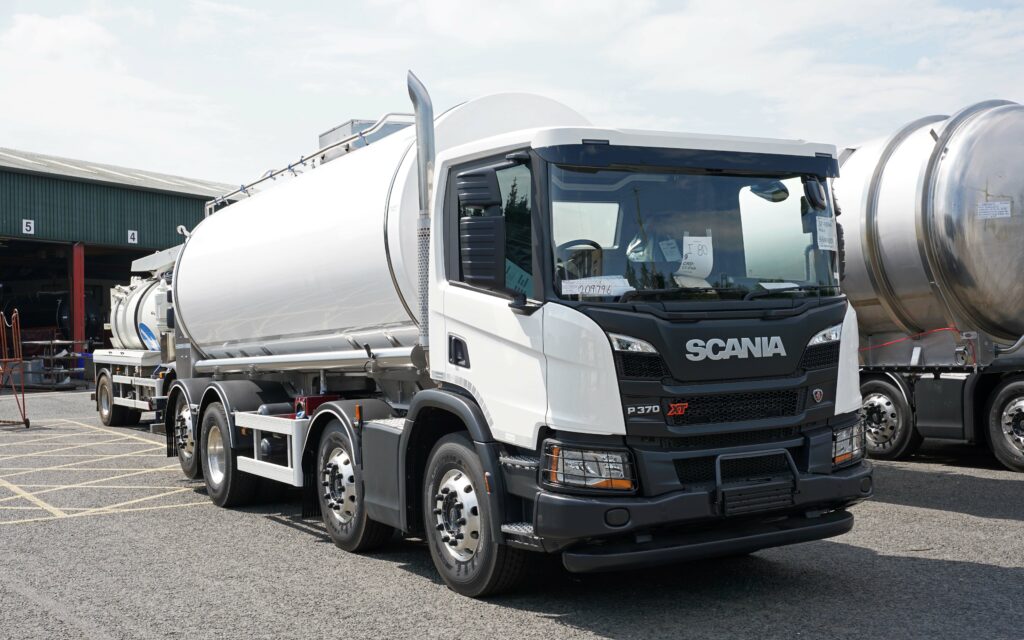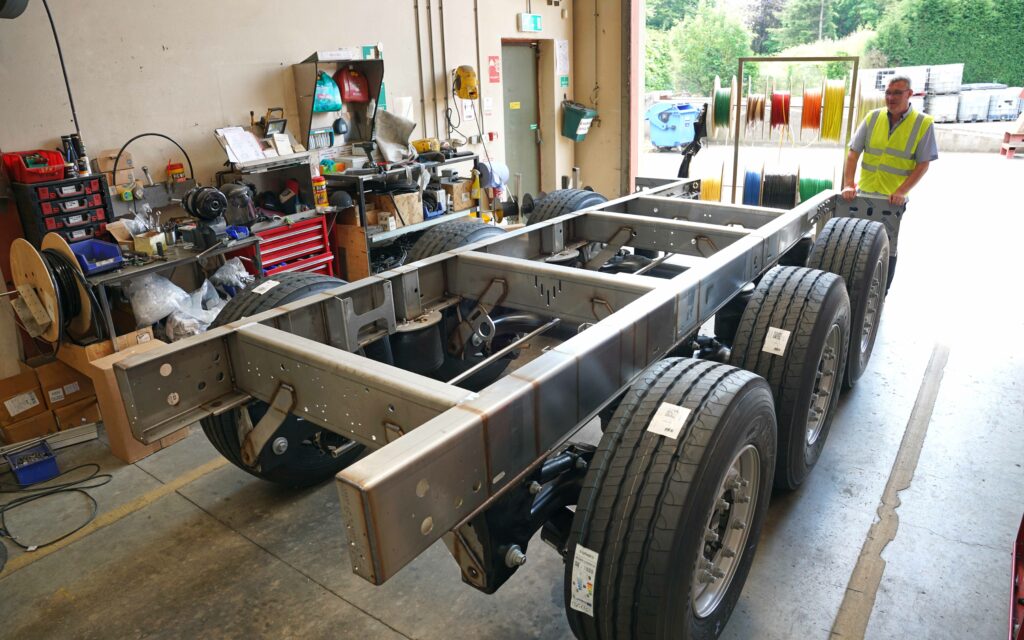Crossland Tankers is a company which originally arose from the need to service farm equipment; it has now returned to its roots with its latest product, a slurry transport tanker built for hauling the material by HGV rather than farm tractor.
It was the need to move pig slurry which first got the McKeefry family into the tanker business. At the time it was running a piggery at Swatragh, Co. Derry/Londonderry, and there was the need to remove the slurry and bring in whey as a feed.
It was a considerable business and as the tanker fleet grew, it started its own tanker repair workshop which then started to take in work from elsewhere, and so the new company took form while the pigs faded from the story.
A tanker a day
Since those early days, Crossland Tankers, named after the townland where it is based, has grown to the extent that it also has a factory in Blackburn, Lancashire, and produces around 220-250 truck-mounted tanks and tanker trailers per year, around one every working day.

This is quite some achievement and the success continues with the lead time being around a year such is the demand for its product.
It is worth noting that the waiting list is not due to the disruption of the past few years, for the company buys in it components well in advance.
Many farmers will already be familiar with Crossland tankers as they supply a large number of milk collection tanks both in Ireland and in the UK, and to their already extensive range they have recently added a 6,600gal (30,000L) truck hauled nurse tank.

The idea of a nurse tank is nothing new, and there are similar products already on the market, but what Crossland Tankers has done is bring its expertise in tanker construction to the table to offer a unit which it feels out-performs the competition.

The decision to bring the company full circle and start producing slurry handling equipment came as it was realised that many larger farms were running HGV tractor units as part of their vehicle fleet.
Professional option
With this more professional approach to farm logistics, the production of a road orientated nurse tank, rather than high speed agricultural trailer, becomes a logical progression in the evolution of farm machinery.
One of the main advantages of going down this route is efficiency.
Tankers designed for the field have big bulbous tyres running at relatively low pressures; a road trailer tyre is be a lot more rigid and is designed to reduce running costs on the road where low ground pressure is not a prerequisite.

Even at more than 500hp, an HGV tractor unit weighs around 7-8t, an equivalent agricultural tractor may weigh in at twice that, meaning that payload is reduced or the farmer is having to needlessly haul 7t of metal around by using a tool designed for the field.
The only modification required to an HGV tractor unit to work the tank is the fitting of a hydraulic power take-off (PTO), a straightforward item that is unlikely to break the bank.
Material choice
When considering the basic design of the the tanker it was decided to construct it of mild steel, and this immediately posed a huge manufacturing problem as the company’s regular tanks are all of stainless steel.

Mild steel, with carbon as its alloying agent is quite different to work with than stainless steel which contains chromium instead.
This results in a material that has different properties when it comes to bending and shaping, thus the tooling needs to be reset to accommodate these differences.
Thankfully, in Blackburn, where all the rolling of the tank shells is performed, they had a back-up plate roller and this was pressed into service to produce the basic cylinder from 5mm sheet, which is capped by dish ends of 6mm plate.
Simplicity of control
Although this first running prototype is of mild, untreated steel, it is intended that both galvanised and stainless steel options will be available in future,
The tank might be of mild steel but working with stainless is the company’s chief competence so all the pipework and fittings are of that material.

The operation has been kept as simple as possible; there is a single Vogelsang positive displacement pump which can run in either direction at any speed.
This can draw up from low level tanks or fill vacuum tankers in the field.
There is a single lever which operates its speed and direction and the valves are manually operated, keeping it robust and reliable.

The central greasing system is also kept as a manual task as experience has shown that automated systems can be temperamental and drivers are quite happy to get the grease gun out while waiting for a tanker to fill.
From a safety perspective it must be borne in mind that this is not a pressure vessel, so filling and emptying is done entirely by pump, whether on the trailer itself or by a ground based unit.
Any excess pressure caused by fermentation is allowed to blow off by a vent valve on the roof.

Working at night is facilitated by scenery lights at the side and rear, along with other strategically placed work lights, all of which create a well illuminated environment for the operator to work in.
Crossland Tankers comes full circle
Logistics and materials handling has always been a large part of farming, improving the efficiency of these operations through the use of equipment specifically designed for the task, rather than pressing into service a tractor made for another set of tasks entirely, would appear a sensible way forward.

The new nurse tanker is to be given its public debut at the Road Transport Expo, which is being held at Stoneleigh, Warwickshire, UK from June 28-30.

